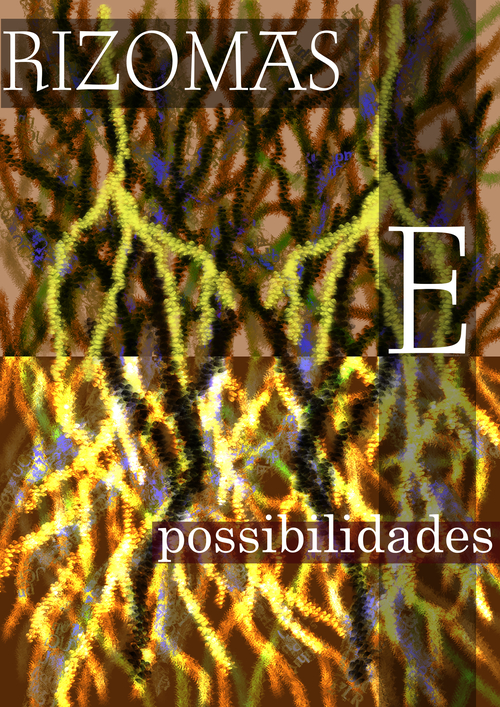Estratégias de leitura na web: entre o acúmulo e a dispersão
DOI:
https://doi.org/10.5007/1807-9288.2020v16n1p141Resumo
A leitura na web convoca estratégias específicas de leitura devido à sua constituição rizomática. O movimento de desdobramento das virtualidades, parte essencial da teoria deleuziana do rizoma, é realizada na web, principalmente, por meio de algoritmos computacionais que sobredeterminam as escolhas do leitor. Com o recurso a metáforas que representam diferentes tipos de leitor, suas estratégias de leitura são analisadas a partir da chave acúmulo versus dispersão. Ao acúmulo, corresponde a hiperconexão que satura a leitura; enquanto à dispersão, corresponde o esvaziamento que leva o leitor à mera repetição. Da busca do equilíbrio entre os dois polos, emergem estratégias que permitem ao leitor obter melhor proveito da multiplicidade de caminhos oferecidos pela web.Referências
BOURDIEU, Pierre. O Poder Simbólico. Rio de Janeiro: Bertrand Brasil, 1989.
CAPPARELLI, Sérgio; SCHMALTZ, Márcia. Fábulas chinesas. Porto Alegre: L&PM, 2012.
DARNTON, Robert. First steps toward a history of reading. Australian Journal of French Studies, v. 51, n. 2–3, p. 152–177, 2014.
DELEUZE, Gilles. Diferença e repetição. 2. ed. Rio de Janeiro: Graal, 2006.
DELEUZE, Gilles. O atual e o virtual. Allez, Éric. Deleuze filosofia virtual. Rio de Janeiro: 34, 1996. .
DELEUZE, Gilles. Qu’est-ce qu’un dispositif? Michel Foucault philosophe: rencontre internationale. Paris: [s.n.], 1988. v. 9. p. 316–325.
DELEUZE, Gilles; GUATTARI, Félix. Introdução: rizoma. Mil platôs: capitalismo e esquizofrenia. 1. ed. São Paulo: Editora 34, 1995. v. 1. p. 11–37.
DRACHSLER, Hendrik; GRELLER, Wolfgang. Privacy and analytics: it’s a DELICATE issue a checklist for trusted learning analytics. Proceedings of the sixth international conference on learning analytics & knowledge, p. 89–98, 2016.
ECO, Umberto. Da árvore ao labirinto: estudos históricos sobre o signo e a interpretação. Rio de Janeiro: Record, 2013.
FEDELI, Gian Carlo. Metaphors of Order and Disorder: From the Tree to the Labyrinth and Beyond. Knowledge Organization, v. 40, n. 6, 2013.
FORBES. The World’s Most Valuable Brands. Disponível em: https://www.forbes.com/powerful-brands. Acesso em: 30 mar. 2020.
FOUCAULT, Michel. Des espaces autres: heterótopies. Architecture, mouvement, continuité, v. 5, p. 46–49, 1984.
FOUCAULT, Michel. Le jeux de Michel Foucault. [Entretien avec D. Colas, A. Grosrichard, G. Le Gaufey, J. Livi, G. Miller, J. Miller, J.-A. Miller, C, Millot, G. Wajeman]. Bulletin périodique du champ freudien, n. 10, p. 62–93, 1977.
LÉVY, Pierre. As tecnologias da inteligência. O futuro do pensamento na era da informática. São Paulo: Editora 34, 1996.
LÉVY, Pierre. O que é o virtual? 2. ed. São Paulo: Editora 34, 1998.
LINDEN, Greg; SMITH, Brent; YORK, Jeremy. Amazon. com recommendations: Item-to-item collaborative filtering. IEEE Internet computing, v. 7, n. 1, p. 76–80, 2003.
MANGUEL, Alberto. O leitor como metáfora: o viajante, a torre e a traça. São Paulo: Edições SESC, 2013.
MAZZOCCHI, Fulvio. Images of thought and their relation to classification: the tree and the net. Knowledge Organization, v. 40, n. 6, p. 366–74, 2013.
MCCLELLAND, Calum. The Difference Between Artificial Intelligence. Machine Learning, and Deep Learning. Medium.com. , 2017 Disponível em: https://medium.com/iotforall/the-difference-between-artificial-intelligence-machine-learning-and-deep-learning-3aa67bff5991. Acesso em: 30 mar. 2020.
MELVILLE, Prem; SINDHWANI, Vikas. Recommender systems. Encyclopedia of machine learning. Springer, 2010. v. 1. p. 829–838.
OLSON, Hope A. Exclusivity, teleology and hierarchy: Our Aristotelean legacy. Knowledge Organization, v. 26, n. 2, p. 65–73, 1999.
OVÍDIO. Metamorfoses. São Paulo: Editora 34, 2017.
PINHEIRO, Lena Vania Ribeiro; PEREIRA, Maria de Nazaré Freitas. O sonho de Otlet: aventura em tecnologia da informação e comunicação. Interdiscursos da Ciência da Informação: arte, museu e imagem, 2000.
RANGANATHAN, Shiyali Ramamrita. Prolegomena to library classification. 2. ed.: Asia Publishing House (New York), 1967.
ROGERS JR., Hartle. Theory of recursive functions and effective computability. Nova Iorque: McGraw-Hill, 1967.
SALES, Rodrigo de. Devir-rizoma: tumulto na organização e representação do conhecimento. Liinc em Revista, v. 14, n. 2, p. 259–275, nov. 2018.
TANENBAUM, Andrew S.; BOS, Herbert. Modern operating systems. London: Pearson, 2007.
Downloads
Publicado
Edição
Seção
Licença
Autores que publicam nesta revista concordam com os seguintes termos:
- Autores mantém os direitos autorais e concedem à revista o direito de primeira publicação, com o trabalho simultaneamente licenciado sob a Licença Creative Commons - Atribuição 4.0 Internacional que permite o compartilhamento do trabalho com reconhecimento da autoria e publicação inicial nesta revista.
- A licença Creative Commons - Atribuição 4.0 Internacional permite a cópia e a redistribuição do material em qualquer suporte ou formato, assim como adaptações, para quaisquer fins, inclusive comerciais.
- Autores têm autorização para assumir contratos adicionais separadamente, para distribuição não-exclusiva da versão do trabalho publicada nesta revista (ex.: publicar em repositório institucional ou como capítulo de livro), com reconhecimento de autoria e publicação inicial nesta revista.



